Have you ever wondered what makes a good wine or how experts can tell one from another just by tasting it? Enter the world of wine tasting, where you’ll discover a new appreciation for this ancient drink.
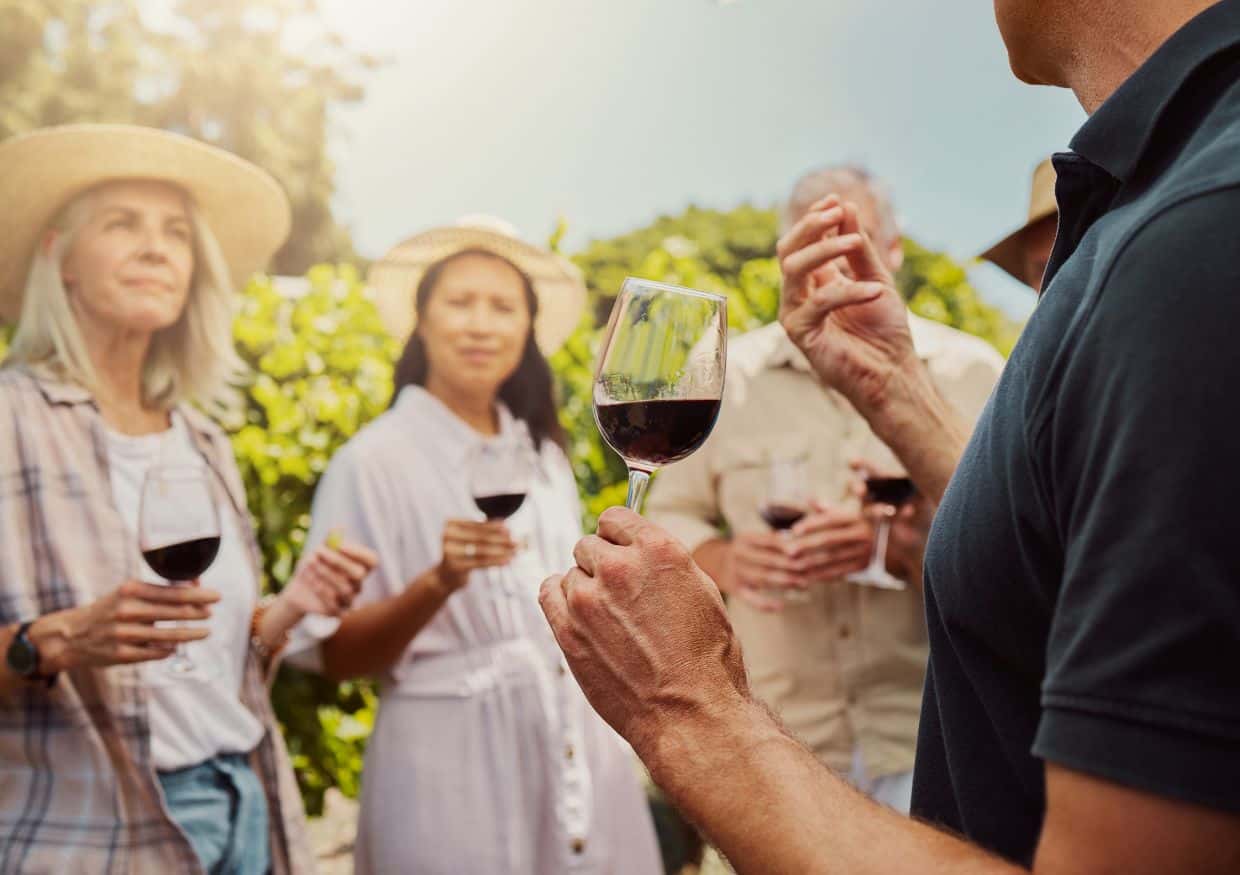
Tasting wine is an art form that evaluates the quality and characteristics of different wines. From swirling the glass to taking notes on aroma and flavor, many elements go into understanding and appreciating wine.
Learning the basics of how to taste wine properly can be an enjoyable and rewarding experience. With these expert tips, you’ll be ready to tour the best wineries in Michigan or discover Oregon wine country.
Preparing for wine tasting
Learning how to taste wine isn’t just about what’s in the glass. It’s also about preparing your body and mind for the experience. Here are some tips for getting yourself ready:
- Start by clearing your mind. If you’ve had a stressful day, take a few minutes to relax before starting your tasting.
- Avoid wearing any strong fragrances that could interfere with your sense of smell.
- Drink plenty of water before you start. This will cleanse your palate so it’s ready for tasting.
- Eat neutral foods beforehand like artisan bread or baked tortilla strips. This will also help cleanse your palate.
It’s also important to approach tasting with an open mind and without preconceived notions about what you’re going to taste. Do not let outside factors influence your perception of the wine. You should focus solely on what’s in the glass.
Wine glasses
Choosing the right wine glass can make all the difference. A good wine glass should be made of clear, thin glass that allows you to see the color of the wine clearly. It should also have a stem that allows you to hold the glass without warming the wine with your body heat.
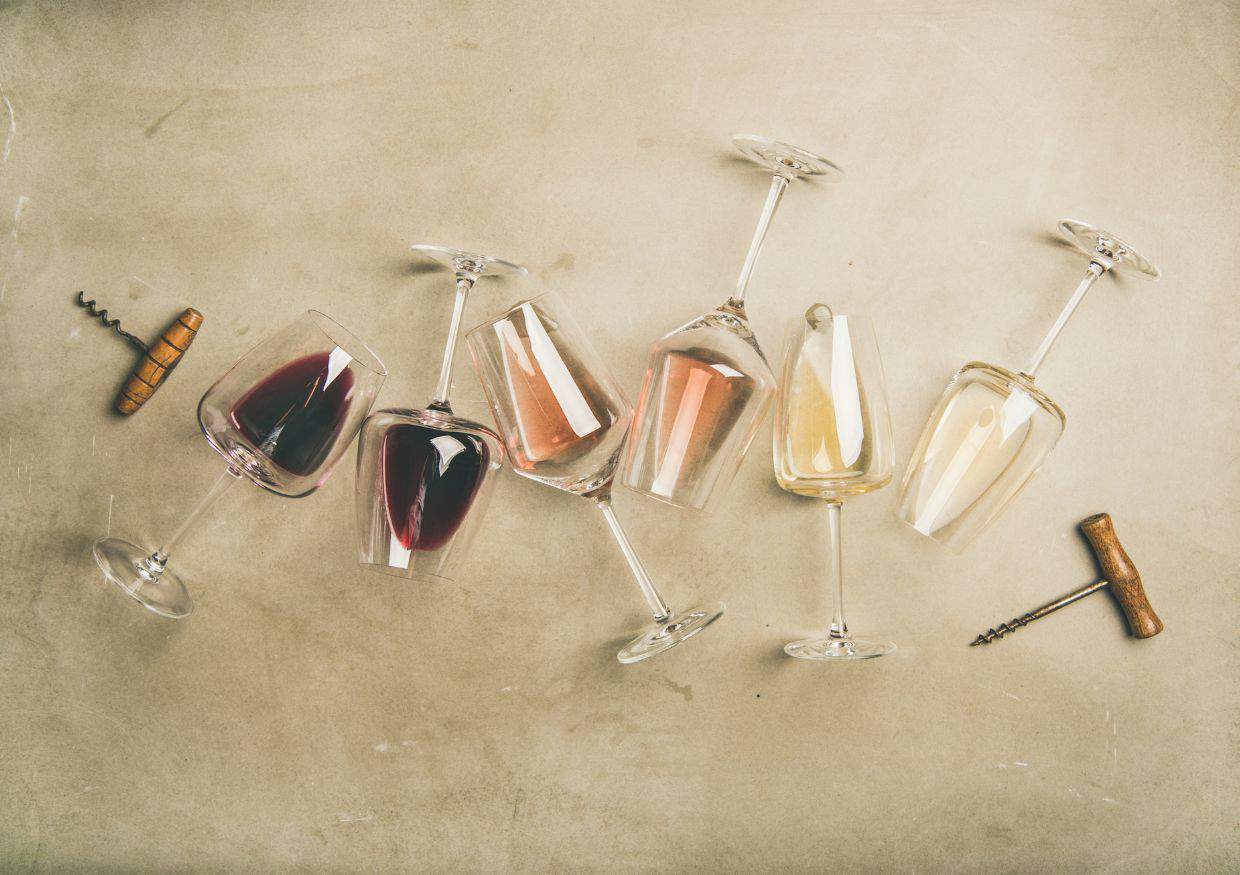
Glass shape
The shape of a wine glass affects how much air comes into contact with the wine and where it hits your tongue when you take a sip. This can significantly impact how you perceive its flavor and aroma. For example, red wines are often served in glasses with wider bowls that allow more air to come in contact with them, while white wines are served in glasses with narrower bowls that focus their aromas toward your nose.
Swirling wine in the glass
Before taking a sip, swirling your wine in its glass releases its aromas and flavors by increasing its surface area. Doing so will help you pick up on subtle notes that might otherwise go unnoticed. However, be sure not to over-swirl as doing so could cause your wine to aerate too much and lose some of its complexity.
Importance of using the right glass
The type of glassware used can also affect how well-balanced oak barrels and fruit flavors are perceived in your wine. For example, using a narrow-mouthed Bordeaux glass will emphasize tannins from oak barrels while minimizing fruit flavors. Conversely, using a wider Burgundy-style glass will highlight fruit notes while downplaying tannins from oak barrels.
“The glassware you use to drink wine undeniably influences its taste. Hearty red wines require exposure to air, which allows their flavors to fully open up. So be sure to serve them in larger-bowled glasses. On the other hand, white wines are best served in glasses that allow the drinker’s nose to be near the glass, enhancing the appreciation of their delicate aromas.”
— Sage Scott, Everyday Wanderer
Smelling the wine
Smelling it is an essential part of the process. The nose can detect primary aromas, which come from the grape, and secondary aromas, which come from the winemaking process. Without smelling the wine, you would miss out on a significant part of the tasting experience.
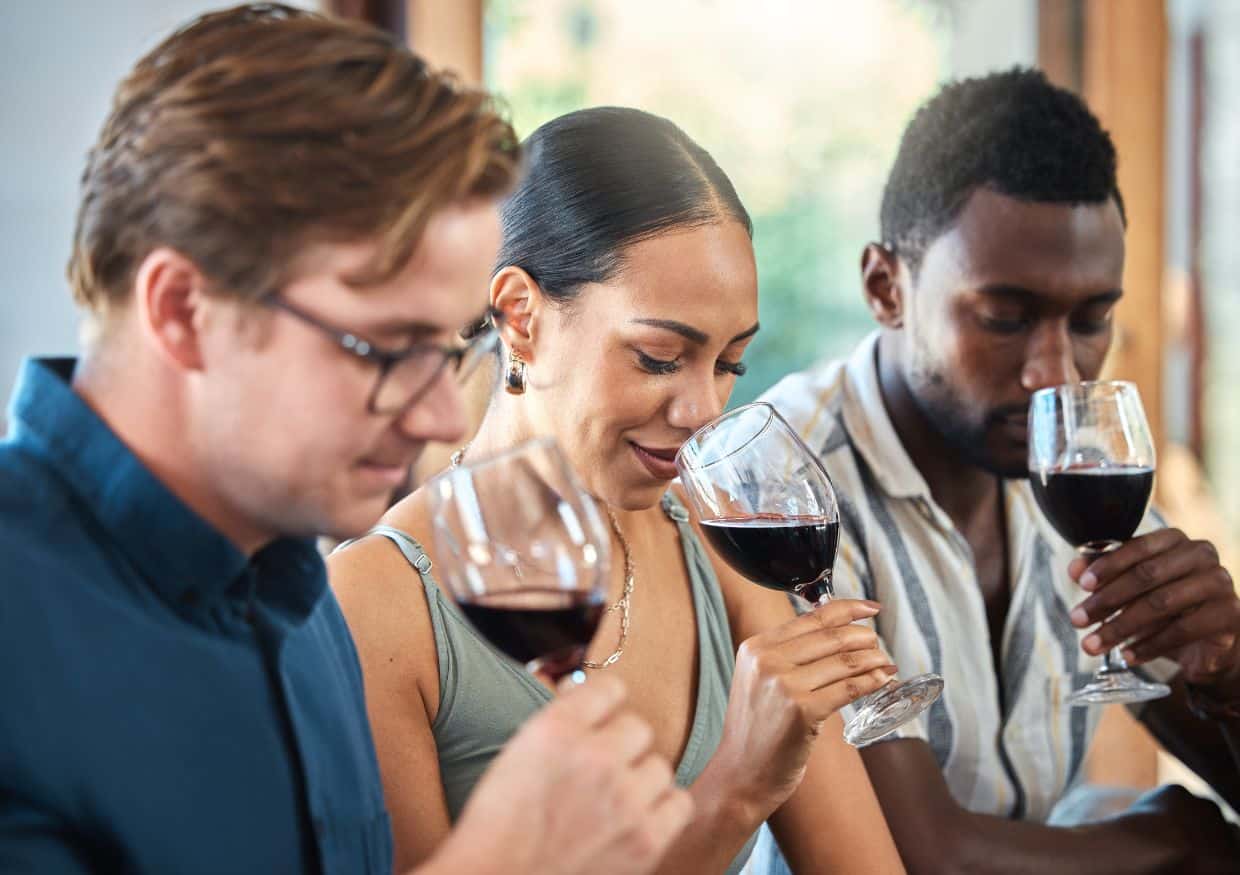
Detecting Aromas
Short sniffs can help identify fruit aromas such as cherry or blackberry scents. By taking a quick whiff, you can get a sense of what kind of fruit flavors you might expect when you taste the wine. It’s important to note that different types of grapes will produce different fruit aromas.
Tertiary aromas like perfume or leather can be detected by swirling the wine in the glass and sniffing deeply. This technique helps release more complex aromas that are not as easily detected with short sniffs alone. When smelling for tertiary aromas, paying attention to how long they linger in your nose after you’ve taken a sniff is crucial.
Evaluating based on taste, color and smell
Wine tasting is an art that involves evaluating a wine’s taste, color and smell. It’s an essential skill for anyone who wants to appreciate the complexity and quality of wine fully. By paying attention to these three elements, you can understand a wine’s grape variety, origin, age and quality.
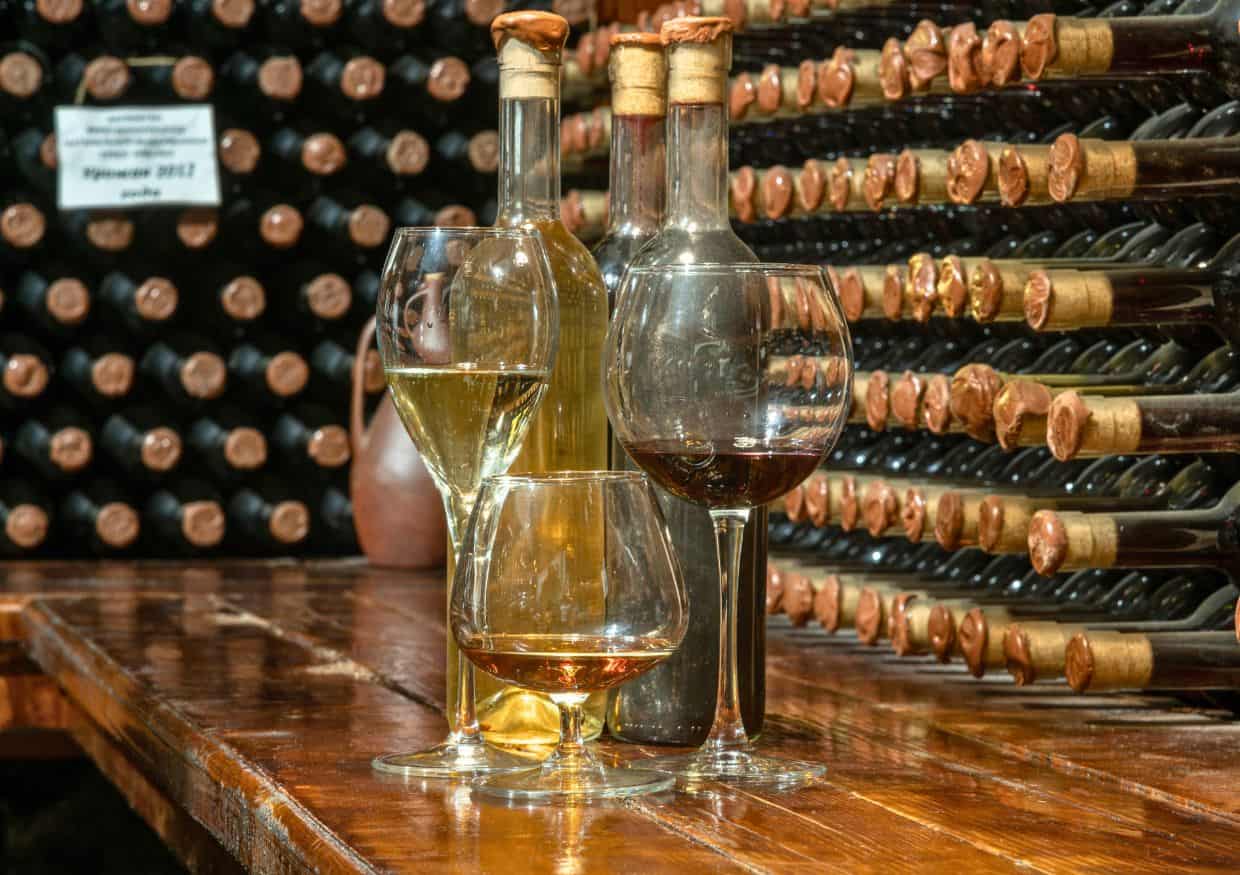
Taste
Taste is one of the most important factors. Several factors affect the taste of wine:
- Acidity: Wines with high acidity have a tangy or sour taste.
- Sweetness: Wines with residual sugar have a sweet taste.
- Tannins: Red wines with high tannins have a bitter or dry taste.
- Alcohol content: Wines with higher alcohol content have a warm or hot sensation in the mouth.
To evaluate wine based on taste, follow these steps:
- Look at the wine’s color and swirl it in your glass to release aromas.
- Take a small sip and hold it in your mouth for a few seconds before swallowing.
- Pay attention to the flavors you detect — are they fruity? Spicy? Earthy?
- Consider how long the flavors linger after you swallow — this is called finish.
By following these steps, you’ll be able to identify different flavor profiles in wines and better understand what you like.
Color
The color of wine can reveal information about its age and quality. Here are some general guidelines:
- White wines get darker as they age; red wines get lighter.
- Young white wines tend to be pale yellow or straw-colored; older white wines can be golden or amber-colored.
- Young red wines tend to be purple or ruby-colored; older red wines can be brick-red or brownish.
To evaluate wine based on color, follow these steps:
- Hold your glass up to the light and examine the color.
- Note any variations in shade or transparency.
- Consider what the color might indicate about the wine’s age or quality.
By paying attention to a wine’s color, you can get a sense of what to expect before you even taste it.

Aroma
A wine’s aroma can reveal information about its origin and grape variety. Here are some general guidelines:
- Fruity aromas are common in young wines.
- Floral aromas are common in white wines.
- Earthy aromas are common in red wines.
To evaluate wine based on aroma, follow these steps:
- Swirl your glass to release aromas and take a deep sniff.
- Pay attention to any scents you detect — are they fruity? Floral? Earthy?
- Consider how intense the aroma is — this can give you an idea of the wine’s complexity.
By paying attention to a wine’s aroma, you can start to identify different grape varieties and regions.
Understanding different flavors and characteristics
A wide variety of flavors and characteristics can be found in different wines. The taste, texture, complexity and vintage all play a role in the tasting.
Recognizing the flavors of different wines
Understanding the different grape varieties is key to recognizing the flavors of different wines. Certain grapes are known for producing specific flavors, making it easier to identify them when tasting wine. For example, cabernet is a popular grape variety known for its black fruit flavors and oak aging.
Fruit flavors like red fruits are common in lighter wines, while heavier wines may have black fruit flavors. Certain grape varieties may produce unique flavors that can be easily identified. For instance, sauvignon blanc often has citrus and herbal notes, while chardonnay has buttery and oaky characteristics.
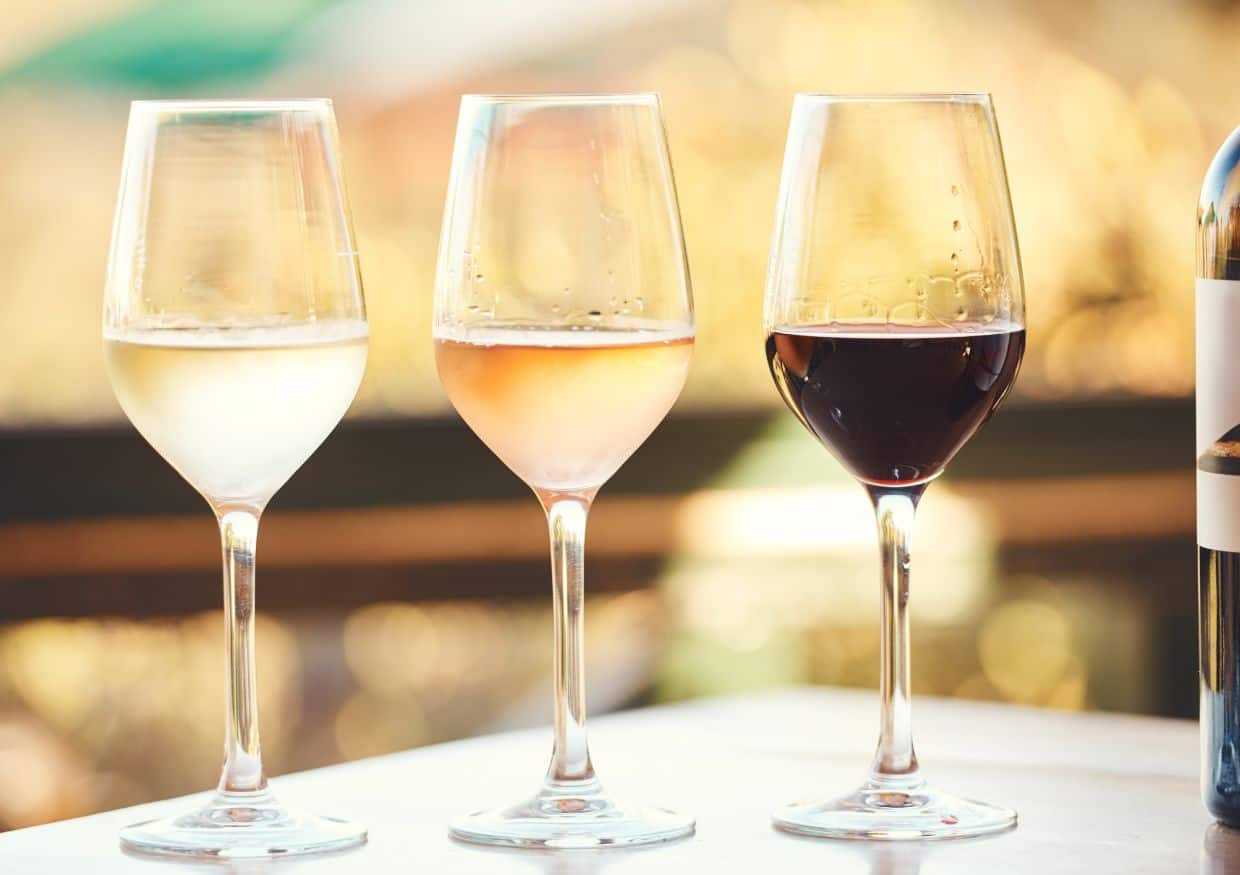
Texture and complexity
Texture refers to how the wine feels in your mouth. A light-bodied wine will feel thin on your tongue, while a full-bodied wine will feel more substantial.
Complexity refers to how many different flavors you can detect in a single glass of wine. A complex wine will have multiple layers of flavor that reveal themselves over time as you taste it.
Effect of vintage on flavor
The vintage of a wine can also affect its flavor. Older vintages tend to have more complex flavors due to their extended aging process, which allows the wine’s tannins (the compounds responsible for structure) to break down further.
For example, an older bottle of cabernet sauvignon may have developed tertiary aromas like leather or tobacco that weren’t present when it was first bottled.
Final word
The art of wine tasting is a fascinating and complex process that requires patience and practice. However, with the right tips and tricks, anyone can learn to appreciate the nuances of different types of wine.
It is important to remember that there are no right or wrong ways to taste wine — everyone’s preferences and experiences are unique. Experiment with trying different wines and taking notes on what you like (and don’t like) about each bottle. Over time, you will start to develop a more refined sense of taste.
Add this to my Wine tasting experiences. Great article on testing wines.
Thanks Jor! Hope you picked up a new tip.
Nicely done.